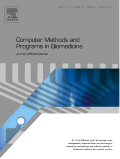
Computer Methods and Programs in Biomedicine
Scope & Guideline
Pioneering Interdisciplinary Research at the Intersection of Computer Science and Health.
Introduction
Aims and Scopes
- Computational Modeling and Simulation:
The journal publishes research on various computational models that simulate biological systems and medical phenomena. This includes finite element analysis, fluid dynamics simulations, and agent-based models that help in understanding complex biological interactions and predicting clinical outcomes. - Artificial Intelligence and Machine Learning:
A significant focus is on the application of AI and machine learning techniques in healthcare, including image analysis, pattern recognition, predictive modeling, and decision support systems. This research aims to enhance diagnostic capabilities and treatment planning. - Medical Imaging and Image Processing:
Research related to the development of advanced imaging techniques and image processing algorithms is prominent. This includes segmentation, registration, and enhancement of medical images to facilitate better diagnosis and treatment. - Biomedical Data Analysis:
The journal covers methodologies for analyzing large-scale biomedical data, including genomic, proteomic, and clinical data. This research aids in uncovering insights that can lead to improved patient outcomes. - Interdisciplinary Applications:
The journal encourages interdisciplinary research that combines engineering, computer science, and biomedical sciences to address healthcare challenges through innovative technological solutions.
Trending and Emerging
- Deep Learning in Medical Imaging:
There is a significant increase in papers utilizing deep learning techniques for various medical imaging tasks, such as segmentation, classification, and enhancement, highlighting the effectiveness of these methods in improving diagnostic accuracy. - Integration of Multi-Omics Data:
Research that combines genomics, proteomics, and other omics data to provide a holistic view of patient health is gaining traction. This trend aligns with the movement towards personalized medicine and targeted therapies. - Telemedicine and Remote Monitoring:
The COVID-19 pandemic has accelerated the focus on telemedicine and remote monitoring technologies, with a notable increase in studies addressing their implementation, effectiveness, and the use of AI in monitoring patient health from a distance. - Explainable AI in Healthcare:
As AI technologies become more prevalent in clinical settings, there is a growing emphasis on explainable AI, with research aimed at making machine learning models more interpretable and trustworthy for healthcare professionals. - Patient-Specific Models and Personalized Medicine:
There is a rising trend in research focused on developing patient-specific computational models that tailor treatments and interventions to individual patient characteristics, enhancing the efficacy of medical care.
Declining or Waning
- Traditional Statistical Methods:
There has been a noticeable decrease in the publication of papers utilizing traditional statistical methods for biomedical data analysis, replaced increasingly by advanced machine learning techniques. This shift reflects the growing preference for more sophisticated analytical tools that can handle complex data structures. - Basic Laboratory Techniques:
Papers focused on basic laboratory techniques and methodologies have become less frequent, likely due to the rise of computational approaches that provide more insights and efficiency in research. - Manual Image Analysis:
Research involving manual image analysis techniques has waned as automated and AI-driven methods have gained traction, offering greater accuracy and efficiency in medical imaging. - Single-Modal Studies:
There is a decline in studies focusing solely on single modalities of data (e.g., only imaging or only genetic data), with a trend towards multimodal approaches that integrate various types of data for a more comprehensive analysis.
Similar Journals
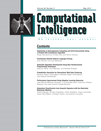
COMPUTATIONAL INTELLIGENCE
Unleashing Insights in Artificial Intelligence and Computational MethodsCOMPUTATIONAL INTELLIGENCE is a prestigious, peer-reviewed journal published by Wiley, dedicated to advancing the field of artificial intelligence and computational mathematics since its inception in 1985. With an impressive track record reflected in its Q2 ranking in both the Artificial Intelligence and Computational Mathematics categories for 2023, this journal is a leading resource for researchers, professionals, and students seeking to explore cutting-edge methodologies, theories, and applications that underpin computational intelligence. The journal is indexed in Scopus, holding a remarkable rank of 18/189 in Computational Mathematics, placing it in the top 10% of its field, and ranks 111/350 in Artificial Intelligence. Although it does not offer open access, articles are readily accessible for institutions, ensuring a wide outreach within the academic community. With its commitment to fostering innovation and critical thought, COMPUTATIONAL INTELLIGENCE continues to be an essential platform for disseminating high-quality research that shapes the future of technology and mathematics.

International Journal of Computer Assisted Radiology and Surgery
Exploring New Dimensions in Radiology and SurgeryInternational Journal of Computer Assisted Radiology and Surgery, published by Springer Heidelberg, stands at the forefront of innovation in the integration of computer technology within medical practices, specifically targeting the evolving fields of radiology and surgery. With its ISSN of 1861-6410 and E-ISSN 1861-6429, this esteemed journal encompasses crucial interdisciplinary research that bridges the gap between computer science and healthcare. Demonstrating a significant impact, it is classified in the esteemed Q1 and Q2 quartiles across multiple categories, including Radiology, Computer Graphics, and Health Informatics, with outstanding Scopus rankings, such as the 52nd position in the field of Medicine - Surgery. Spanning from 2006 to 2024, the journal remains pivotal for researchers and professionals, delivering high-quality articles that explore cutting-edge methodologies, algorithms, and applications that enhance surgical precision and diagnostic accuracy. Although it follows a subscription model, its commitment to disseminating valuable knowledge makes it an essential resource for those seeking to push the boundaries of technology in medicine.

Computation
Championing rigorous research for a digital future.Computation, published by MDPI, is an esteemed open-access journal that has been contributing to the fields of applied mathematics and computer science since its inception in 2013. With an E-ISSN of 2079-3197, this Swiss-based journal operates under a philosophy of free knowledge dissemination, allowing researchers, professionals, and students globally to access high-quality content without financial barriers. Recognized for its rigorous peer-review process, Computation is currently categorized in the Q2 and Q3 quartiles across significant domains, including Applied Mathematics (#181/635), Theoretical Computer Science (#52/130), and Modeling and Simulation (#138/324). As it converges towards 2024, the journal continues to attract innovative and impactful research aimed at advancing theoretical frameworks and practical applications within these disciplines. Joining the Computation community not only enriches individual research portfolios but also contributes to the broader conversation on computational methodologies and their applications in solving real-world problems.
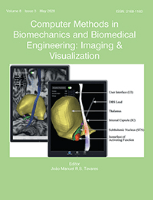
Computer Methods in Biomechanics and Biomedical Engineering-Imaging and Visualization
Transforming Healthcare Through Cutting-Edge Visualization MethodsComputer Methods in Biomechanics and Biomedical Engineering - Imaging and Visualization is a prominent academic journal published by Taylor & Francis Ltd, dedicated to the intersection of computational methods and biomedical engineering. With an ISSN of 2168-1163 and an E-ISSN of 2168-1171, the journal has become a crucial resource for researchers and professionals exploring innovative imaging and visualization techniques in healthcare. Covering a broad spectrum of topics, it aims to facilitate the advancement of knowledge in areas such as biomechanics, computational mechanics, and medical imaging. Holding a strong position in various Scopus rankings, including Q2 in Computational Mechanics, it offers valuable insights that foster interdisciplinary collaboration. Although it is not an open-access journal, researchers can access its rich repository of knowledge, which is instrumental in shaping future advancements in biomedical applications. The journal’s commitment to quality and relevance ensures that it remains an authoritative source for emerging trends and methodologies within the field, serving as a vital tool for academia and industry practitioners alike.

Visual Computing for Industry Biomedicine and Art
Unleashing the Potential of Visual Computing for a Better TomorrowVisual Computing for Industry Biomedicine and Art, published by SPRINGER SINGAPORE PTE LTD, is an esteemed Open Access journal that has made significant contributions to its fields since its inception in 2018. With an impressive scope that intersects Computer Graphics, Computer Science, Medicine, and the Visual Arts, this journal serves as a pivotal platform for disseminating research and advancements that address contemporary challenges and innovations in visual computing. Notably, it holds a commendable standing in various Scopus rankings, achieving Q2 status in critical categories such as Computer Vision and Pattern Recognition and Visual Arts, which underscores its impact and reach within the academic community. Its promulgation of high-quality research fosters synergy between diverse disciplines, making it an invaluable resource for researchers, professionals, and students eager to engage with cutting-edge developments in both technology and the arts. The journal's commitment to accessible knowledge, evident through its Open Access offering, further enhances its role as a beacon for scholarly discourse in visual computing.
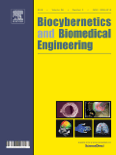
Biocybernetics and Biomedical Engineering
Transforming Healthcare Through Cutting-Edge EngineeringBiocybernetics and Biomedical Engineering, published by ELSEVIER in the Netherlands, is a prestigious journal that stands at the forefront of the intersecting fields of biomedical engineering and artificial intelligence. With an impressive Impact Factor that places it in the Q1 category for Biomedical Engineering, this journal not only ranks 17th out of 303 in Scopus but also boasts a remarkable percentile ranking of 94th, highlighting its influence and relevance within the scientific community. Since its inception in 2008, Biocybernetics and Biomedical Engineering has aimed to publish cutting-edge research that integrates principles of cybernetics with technological advancements in health care, thereby fostering innovations that improve patient outcomes. Dedicated to advancing knowledge in biomedical technology, the journal serves as a vital resource for researchers, professionals, and students seeking to explore the latest developments and methodologies in the field.

Annual Review of Biomedical Data Science
Exploring the Frontiers of Biomedical ResearchAnnual Review of Biomedical Data Science, published by ANNUAL REVIEWS, stands as a premier journal in the fields of Biomedical Engineering, Biochemistry, Genetics, and Cancer Research, with an impressive Q1 ranking across these categories in 2023. With its ISSN and e-ISSN both assigned as 2574-3414, this journal serves as a critical resource for researchers, professionals, and students looking to delve into comprehensive reviews of the rapidly evolving landscape of biomedical data science. The journal's scope includes the intersection of data science methodologies and biomedical applications, making it essential for those aiming to stay at the forefront of innovations that drive advancements in healthcare and medical research. Although it currently does not provide open access options, its commitment to high-quality research and its robust rankings—placing it in the 94th percentile in its field—underscore its significance and credibility in the academic community. Operating from the United States, with its offices located in Palo Alto, CA, this journal is a vital contributor to the discourse on the integration of data science within biomedical fields, fostering collaboration and knowledge dissemination among scholars worldwide.
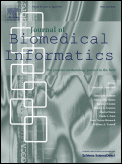
JOURNAL OF BIOMEDICAL INFORMATICS
Transforming biomedical research with cutting-edge informatics.JOURNAL OF BIOMEDICAL INFORMATICS, published by Academic Press Inc. Elsevier Science, is a premier peer-reviewed journal dedicated to the integration of computer science and health informatics to advance the field of biomedical engineering and healthcare. With its ISSN 1532-0464 and E-ISSN 1532-0480, this influential journal has established itself with an impressive impact factor, reflecting its high-quality research contributions. Recognized within the top quartile (Q1) of both Computer Science Applications and Health Informatics for 2023, the journal ranks #135 out of 817 in Computer Science Applications and #25 out of 138 in Health Informatics according to Scopus metrics. Offering open access options, it fosters extensive dissemination and accessibility of groundbreaking research findings to the scientific community. As a scholarly platform from 2001 to 2024, it is engineered to cater to the educational needs of researchers, professionals, and students, promoting innovative studies that bridge the gap between technology and healthcare.

ANNALS OF BIOMEDICAL ENGINEERING
Bridging the gap between engineering and medicine.ANNALS OF BIOMEDICAL ENGINEERING is a premier journal in the field of biomedical engineering, published by Springer. Established in 1972, this journal has become a vital resource for researchers, professionals, and students engaged in the rapidly evolving domain of biomedical technology. With a commendable impact factor and ranked in the 76th percentile among its peers as per Scopus, it exemplifies excellence in disseminating critical research findings. The journal covers a broad scope of topics related to the integration of engineering principles with medical and biological sciences, facilitating innovations that enhance healthcare outcomes. Although open access is not offered in this journal, it remains an essential platform for scholarly communication, contributing to the continuous advancement of knowledge in biomedical engineering. ANNALS OF BIOMEDICAL ENGINEERING is not only a bridge for academics to share groundbreaking research but also an influential guide for practical applications in medicine and health technologies, making it a fundamental publication for its readership.
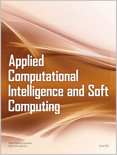
Applied Computational Intelligence and Soft Computing
Transforming Ideas into Intelligent SolutionsApplied Computational Intelligence and Soft Computing, published by HINDAWI LTD, is a premier open access journal that has been disseminating critical research since 2009, focusing on the intersection of artificial intelligence and soft computing. With an impressive array of quartile rankings in 2023, including Q2 in Civil and Structural Engineering and Computational Mechanics, this journal has established itself as a significant contributor to the fields of computer science and engineering. Based in Egypt, it plays a vital role in advancing knowledge by providing researchers, professionals, and students with easy access to high-quality studies. The journal’s rigorous peer-review process ensures that only the most impactful research is highlighted, making it an essential resource for those looking to stay abreast of the latest innovations and methodological advancements in applied computational intelligence. Its Scopus rankings further affirm its influence and reputation within the academic community, exemplifying its commitment to facilitating collaboration and fostering intellectual discourse in various scientific domains.